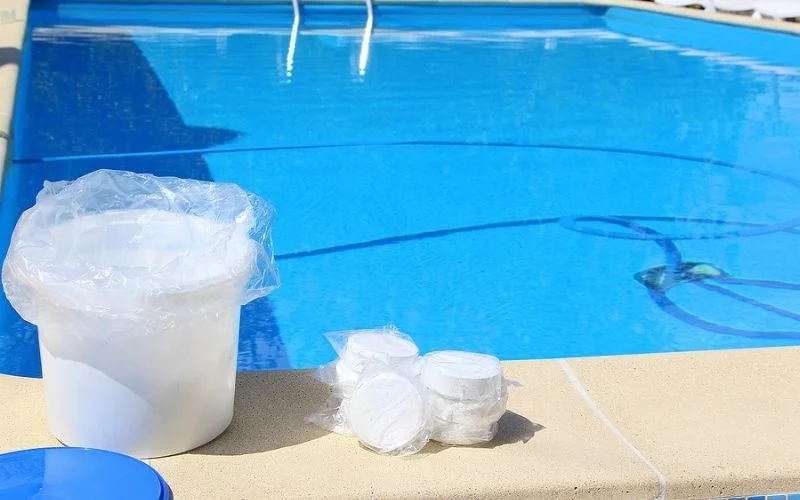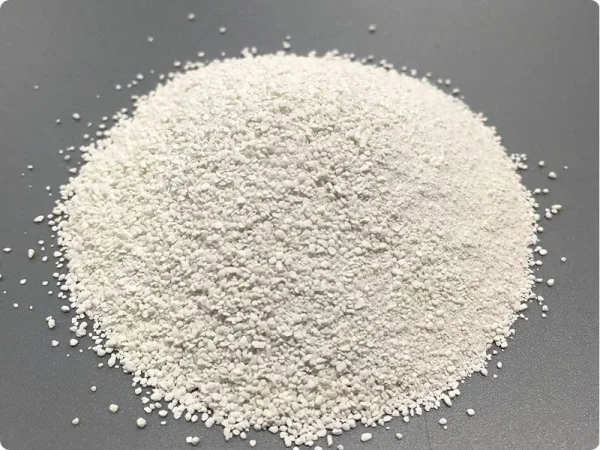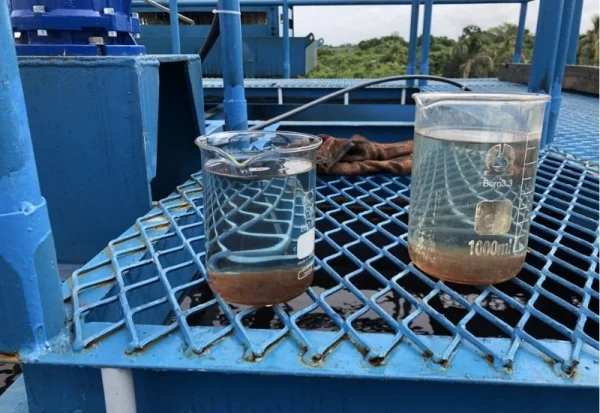
One of the most crucial components in keeping your pool water crystal clear and free from harmful bacteria is chlorine tablets. These tablets are the workhorses of pool sanitation, effectively killing algae, bacteria, and other unwanted contaminants. With a variety of tablet sizes and types available, determining the correct dosage can be a challenge. How many chlorine tablets for your pool is an important question, as too little chlorine can lead to algae growth and cloudy water, while excessive amounts can damage pool equipment and irritate swimmers' skin and eyes. In this comprehensive guide, we'll explore the different chlorine tablet options, provide guidelines for calculating the right dosage, and share tips for proper usage and maintenance.
Understanding Chlorine Tablets
Chlorine tablets are solid forms of chlorine that dissolve in pool water, releasing the disinfecting agent. As the tablets dissolve, they release free chlorine, which oxidizes and destroys harmful bacteria, viruses, and other microorganisms. This process keeps the water clean, clear, and safe for swimming.
How many chlorine tablets for your pool is determined by the type and size of the tablets. There are two main types based on size: 1-inch and 3-inch tablets. The 1-inch tablets are typically used for smaller pools, while the larger 3-inch tablets are better suited for larger pools or those requiring higher chlorine levels. Additionally, some chlorine tablets are stabilized with cyanuric acid, which helps protect the chlorine from being broken down by UV rays from the sun.
While chlorine tablets are the most common and convenient option, pool owners can also consider alternatives like liquid chlorine or granulated chlorine shock treatments. However, these alternatives often require more frequent application and may be less stable or effective than chlorine tablets.

Understanding Chlorine Tablets
Determining the Right Dosage
Achieving the correct chlorine dosage is crucial for maintaining a safe and healthy pool environment. Manufacturers typically provide dosage guidelines on the product packaging, but how many chlorine tablets for your pool should you use? As a general rule of thumb, use one 3-inch chlorine tablet for every 5,000 gallons of pool water. For 1-inch tablets, the recommendation is one tablet per 300 gallons.
Here's a handy table to help you determine the approximate number of 3-inch chlorine tablets needed for your pool:
| Pool Capacity (gallons) | Number of 3-inch Tablets |
| 5,000 | 1 |
| 10,000 | 2 |
| 15,000 | 3 |
| 20,000 | 4 |
| 25,000 | 5 |
| 30,000 | 6 |
Keep in mind that various factors can affect the actual chlorine demand, such as sunlight exposure, bather load (how frequently the pool is used), and environmental conditions like wind and rainfall. In general, pools with higher usage or more direct sunlight will require higher chlorine levels.
It's essential to regularly test your pool's chlorine levels using a reliable test kit or pool test strips. The ideal free chlorine level should be between 1 and 3 parts per million (ppm). If your tests indicate levels below this range, you'll need to add more chlorine tablets. Conversely, if the levels are too high, you may need to reduce the dosage or partially drain and refill the pool.

Determining the Right Dosage
Properly Adding Chlorine Tablets to Your Pool
Once you've determined how many chlorine tablets for your pool are needed, it's important to add them correctly for even distribution and maximum effectiveness. The best method is to use an automatic chlorinator or a floating chlorine dispenser.
Automatic chlorinators are installed inline with your pool's plumbing system, allowing the chlorine tablets to dissolve slowly and evenly distribute the chlorine throughout the pool. To use an automatic chlorinator, simply turn off the pool pump, isolate the chlorinator from the system, remove the lid, and fill it to the top with chlorine tablets. Replace the lid, open the valves, and adjust the control dial to the desired feed rate.
For those without an automatic chlorinator, a floating chlorine dispenser is an affordable and effective alternative. These floating devices have a compartment where you can place the chlorine tablets. As the dispenser floats around the pool, the tablets dissolve, releasing chlorine into the water. Be sure to follow the manufacturer's instructions and regularly refill the dispenser as needed.
Avoid directly adding chlorine tablets to the pool or the skimmer basket, as this can lead to uneven chlorine distribution, potential damage to pool surfaces or equipment, and potential safety hazards from concentrated chlorine exposure.

Properly Adding Chlorine Tablets to Your Pool
Maintaining Chlorine Levels
Maintaining the appropriate chlorine levels in your pool is an ongoing process. Regularly testing the water is crucial to ensure the chlorine levels remain within the ideal range of 1 to 3 ppm. Many pool experts recommend testing at least once a week, or more frequently during periods of heavy use or extreme weather conditions.
If your test results show chlorine levels below 1 ppm, it's time to add more chlorine tablets to your automatic chlorinator or floating dispenser. Conversely, if the levels exceed 3 ppm, you may need to reduce the chlorine feed rate or partially drain and refill the pool to dilute the excess chlorine.
In addition to regular chlorine maintenance, it's essential to perform periodic shock treatments to eliminate chloramine buildup (the combined chlorine that can cause strong chlorine odors and eye irritation). Shock treatments involve adding a large dose of chlorine or non-chlorine shock to oxidize and remove chloramines, effectively "resetting" the chlorine levels.
Frequently Asked Questions About Chlorine Tablets for Pools
Despite your best efforts, you may encounter common pool issues related to improper chlorine levels or other factors. Here are some common question:
How much chlorine should I add to a 10,000 gallon pool?
In a 10,000 gallon pool, you should add two 3-inch chlorine tablets.
How much chlorine should you add to a pool for the first time?
When first filling a new pool, you should add two 3-inch chlorine tablets for every 10,000 gallons of water. You may need to add slightly more to account for the untreated fresh water initially. After 24 hours, test the chlorine level and add more tablets if necessary.
Can you just add chlorine tablets directly to the pool?
While it is possible to add chlorine tablets directly to the pool water, it is not recommended. Doing so can lead to uneven chlorine distribution and potential damage to pool surfaces or equipment. It's best to use an automatic chlorinator or a floating chlorine dispenser to ensure proper dissolution and distribution of the chlorine.
What are the advantages of using an automatic chlorinator?
Automatic chlorinators offer several advantages over manually adding chlorine tablets:
- Consistent chlorine levels through controlled, steady release
- Convenience - no need to frequently add tablets manually
- Ensuring an even distribution of chlorine throughout the pool
- Ability to adjust chlorine output as needed
How often should I test and adjust chlorine levels?
It is recommended to test your pool's chlorine levels at least once a week using a reliable test kit. Based on the results, you can then adjust the number of chlorine tablets in your automatic chlorinator or floating dispenser to maintain the ideal 1-3 ppm free chlorine level.
What should I do if my chlorine levels are too high or too low?
If your chlorine levels are too high (above 3 ppm), you can partially drain and refill your pool to dilute the chlorine concentration. If levels are too low (below 1 ppm), add more chlorine tablets to raise the level back into the recommended range.
Conclusion
Maintaining the right chlorine levels in your pool is essential for a safe, healthy, and enjoyable swimming experience. By understanding the different types of chlorine tablets, calculating the appropriate dosage based on your pool size, and following proper application and maintenance techniques, you can keep your pool water sparkling clean and inviting. How many chlorine tablets for your pool is a critical question; regularly testing your pool's chlorine levels and adjusting the dosage accordingly is key to success. Establish a consistent pool maintenance routine, including the use of chlorine tablets, and don't hesitate to seek professional advice if you encounter persistent issues.
With the right approach and attention to detail, you can enjoy a crystal-clear pool all season long, providing a refreshing oasis for you and your loved ones.
Related Articles
Finding the Best Chlorine for Your Pool: A Comprehensive Guide
Chlorine is the backbone of pool sanitation, responsible for killing harmful bacteria, viruses, and ...
Exploring the Different Types of Chlorine Used in Water Treatment
Water treatment and disinfection are essential for maintaining the safety and quality of our water ...
Everything You Need to Know About Chlorine Granules for Pool Sanitation
When it comes to maintaining a clean and hygienic swimming pool, chlorine granules , commonly known ...
How to Prepare PAC for Water Treatment?
Water is essential for life, yet access to clean and safe water remains a significant challenge ...
Is It Safe to Touch PAC Chemicals with Bare Hands?
If you work in the water treatment industry, you've likely heard of PAC chemicals . As known, this ...
Liquid Chlorine vs Tablets - Which is Better?
Maintaining a clean and safe swimming pool is crucial for an enjoyable and healthy swimming ...






